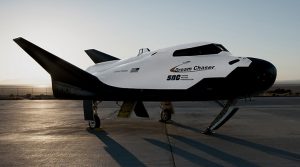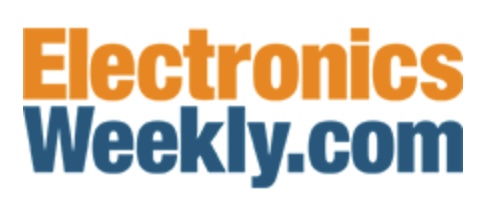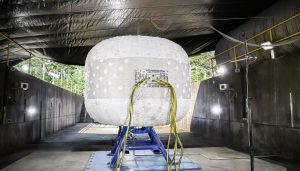This is part of its commercial space station development, planned for use in low-Earth orbit (LEO).
The company – a space spin-off from Sierra Nevada Corporation – said that this latest test was the first to include a steel blanking plate inserted into the soft shell.
Note that the test – in partnership with ILC Dover and Nasa – was actually carried out back in August. The parties conducted an Ultimate Burst Pressure (UBP) test on a one-third-scale version of the inflatable habitat. It was intended to emulate a future design component, such as a window, robotic arm or antenna attachment point.
“Inclusion of the blanking plate hard structure was a game-changer because this was the first time that we infused metallics into our softgoods pressure shell technology prior to conducting a UBP test,” said Senior Director Engineering and Product Evolution Director for Sierra Space Destinations, Shawn Buckley.
“With this added component, once again, we successfully demonstrated that LIFE’s current architecture at one-third scale meets the minimum 4x safety factor required for softgoods inflatables structures. This is a phenomenal achievement and provides the necessary engineering foundation that allows us to move into the next phase of the LIFE product line development – full-scale testing of LIFE.”
Sierra expects to complete full-scale testing of LIFE by the end of this year, it says.
LIFE is an inflatable module, described as a three-storey “commercial habitation, science and bio pharma platform designed to allow humans to live and work comfortably in LEO and beyond”. It is constructed of high strength, “softgoods” material (sewn and woven fabrics, primarily Vectran) that become rigid structures when pressurised.
Series B
The company also recently announced that it had raised $290 million in Series B funding, bringing its total investments to $1.7 billion. Series A investments reached $1.4 billion, we previously reported.
The round was co-led by a Japanese partnership of MUFG Bank, Kanematsu, and Tokio Marine & Nichido Fire Insurance. It also also included investment by General Atlantic, Coatue, and Moore Strategic Ventures & Sierra Holding Company.
“Sierra Space is excited to create a long-term strategic relationship with our Japanese investors and industry partners,” said Tom Vice, CEO of Sierra Space.
“As we transition our revolutionary Dream Chaser spaceplane into operations for NASA cargo resupply missions to the International Space Station, we focus our capital deployment to the development and operations of the first commercial space station – the next step in our in-space infrastructure – the growth of our national security offering and scaling our space systems components business.”
Dream Chaser
 The Dream Chaser Spaceplane, pictured right, is a reusable, multi-mission space utility vehicle, capable of transportation services to and from low-Earth orbit. SNC describes it as the only commercial, lifting-body vehicle capable of a runway landing.
The Dream Chaser Spaceplane, pictured right, is a reusable, multi-mission space utility vehicle, capable of transportation services to and from low-Earth orbit. SNC describes it as the only commercial, lifting-body vehicle capable of a runway landing.
The Dream Chaser Cargo System was selected by NASA to provide cargo delivery and disposal services to the International Space Station (ISS). These are set to begin in late 2022, delivering up to 12,000 pounds of cargo at a time. The return journey from the ISS, says the company, will carry critical data, generated by ISS researcher experiments.
See also: Sierra Space explores point-to-point terrestrial deliveries

